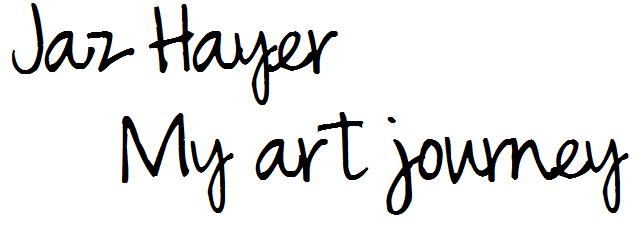I know that I have taken a great risk in doing what I have done for my art this year. But taking this risk has really allowed me to build my confidence in developing a way of working that has really allowed me to value learned experience as opposed to a final and static outcome.
Within my art, many people have participated already, and many have chosen not to which is also equally fine. The art of participation in itself is one that remains a personal preference and a choice.
My intention this year has been to facilitate art, and see myself as a facilitator rather than a 'maker'. I wanted to break participants away from understanding that the label that has been placed on 'art' means much more than the traditional aesthetic components that are commonly associated and percieved as art e.g. drawing and painting. I intended it to be more about the concept of self expression, engagement & participation.
This element of self expression has become particularly evident in this project. For example, many participants have created responses which are of a large scale, and do not fit into the sandwich bags.
However, these responses have still been included and valued within this project as they have been photographed and placed into sandwich bags which are exhibited within my installation. For example, one participant created a huge mobile to represent her identity:
This element of self expression has become particularly evident in this project. For example, many participants have created responses which are of a large scale, and do not fit into the sandwich bags.
However, these responses have still been included and valued within this project as they have been photographed and placed into sandwich bags which are exhibited within my installation. For example, one participant created a huge mobile to represent her identity:
McNiff (1998, p.60) explains,
"Successful expression involves the ability to let materials and unplanned gestures to lead the way."
As Roux (2007, p.3) explains,
"Many art forms require participation to some extent. After all, experiencing art by observing, listening or watching is also a kind of participation."
My intention has been to facilitate art by the concept of participatory art being artist led, but the responses created within this approach to be recognised as those of the participants of the project.
In this context, the art has become the exchange of information between the artist (facilitator - me), participants, and the viewers.
I have envisaged the audience as a community which as a result produces and generates subjective encounters. Through these encounters, meaning is elaborated both individually & collectively, rather than in individual consumption in relation to one art object.
My work elevates the concept on which it is based. I wanted to challenge perceptions on art in relation to a theme (identity) that directly influences the way we participate and engage with the world around us.
Fisher (2004, p.8) states,
"Creativity, like evolution and education, is founded on experiementation, variations that sometimes succeed, sometimes fail.
Creativity, therefore, requires the courage to take risks - the risk to be different."
The Critical Issues Module which I have also undertaken this year has completely changed the way that I value, appreciate, create, and teach art. Theoretical perspectives & ideologies have been explored, discussed, and considered that surround arts education & the development of these within my own pedagogy.
References:
Fisher, R. (2004) Unlocking Creativity. London: David Fulton Publishers.
McNiff, S. (1998) Trust the Process: An Artist's Guide to Letting Go. Massachuttets: Shambala Publishers.
Roux, X. (2007) Participation in Contemporary Art. New York: Redseeds Art.
References:
Fisher, R. (2004) Unlocking Creativity. London: David Fulton Publishers.
McNiff, S. (1998) Trust the Process: An Artist's Guide to Letting Go. Massachuttets: Shambala Publishers.
Roux, X. (2007) Participation in Contemporary Art. New York: Redseeds Art.




No comments:
Post a Comment